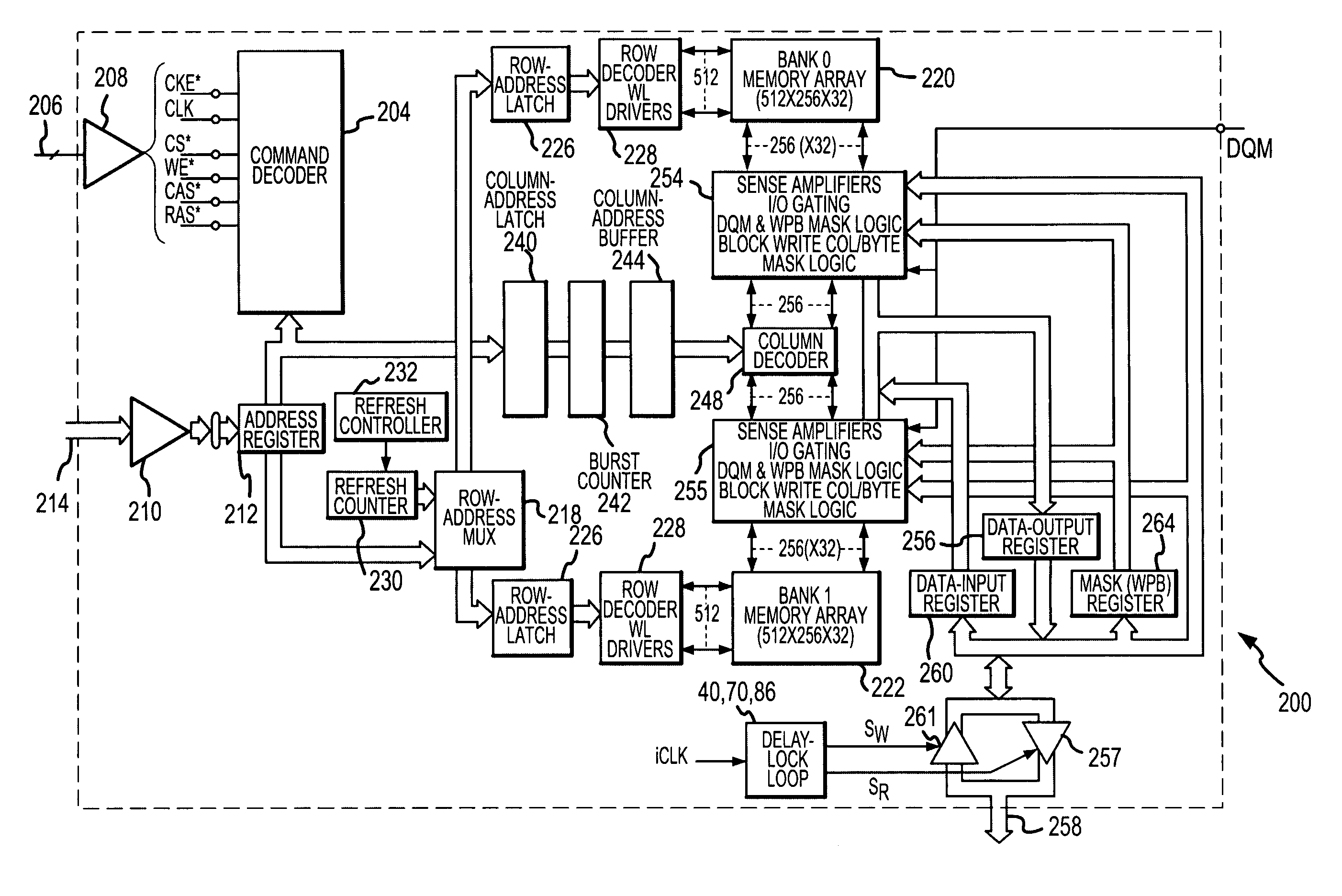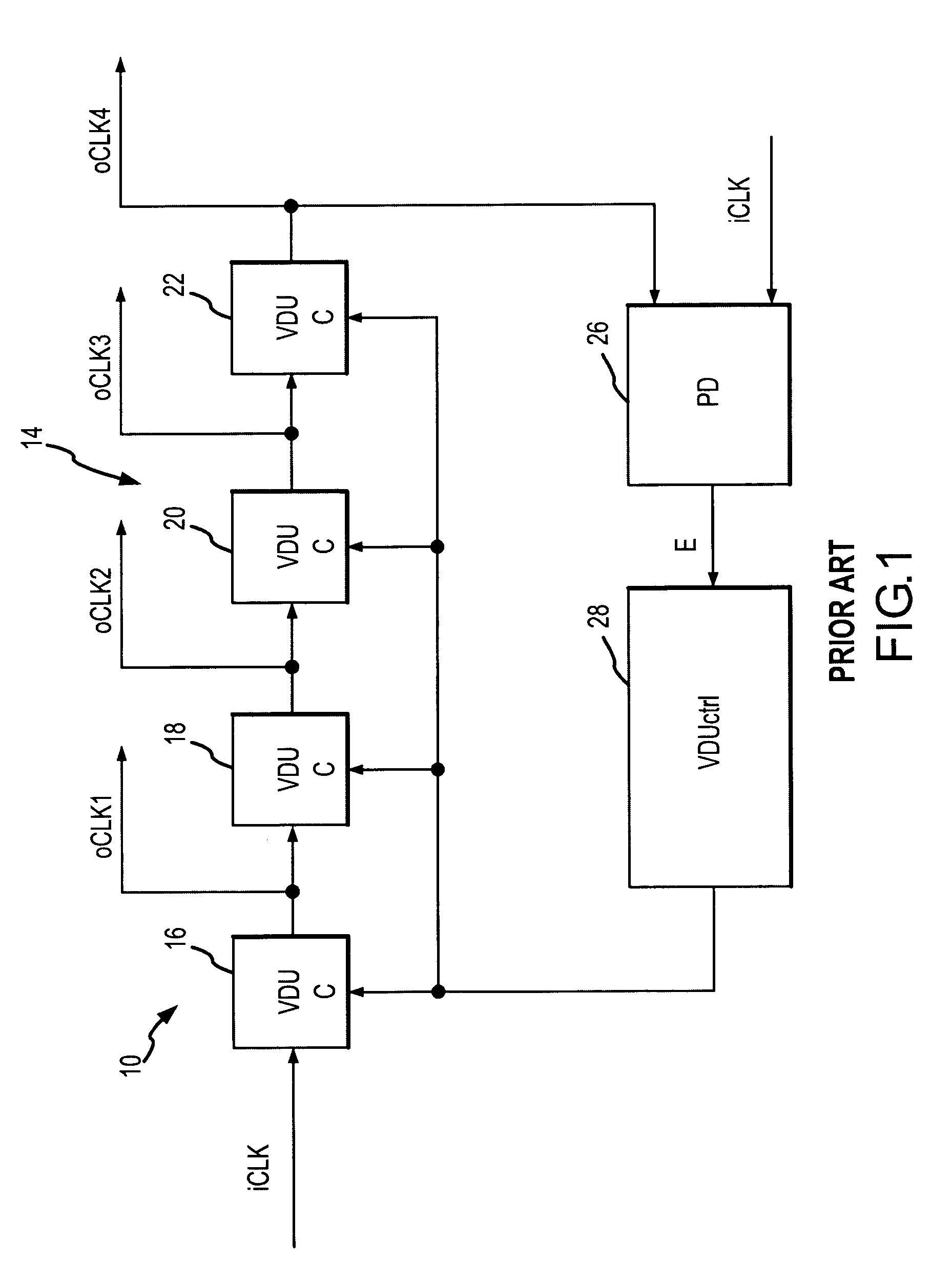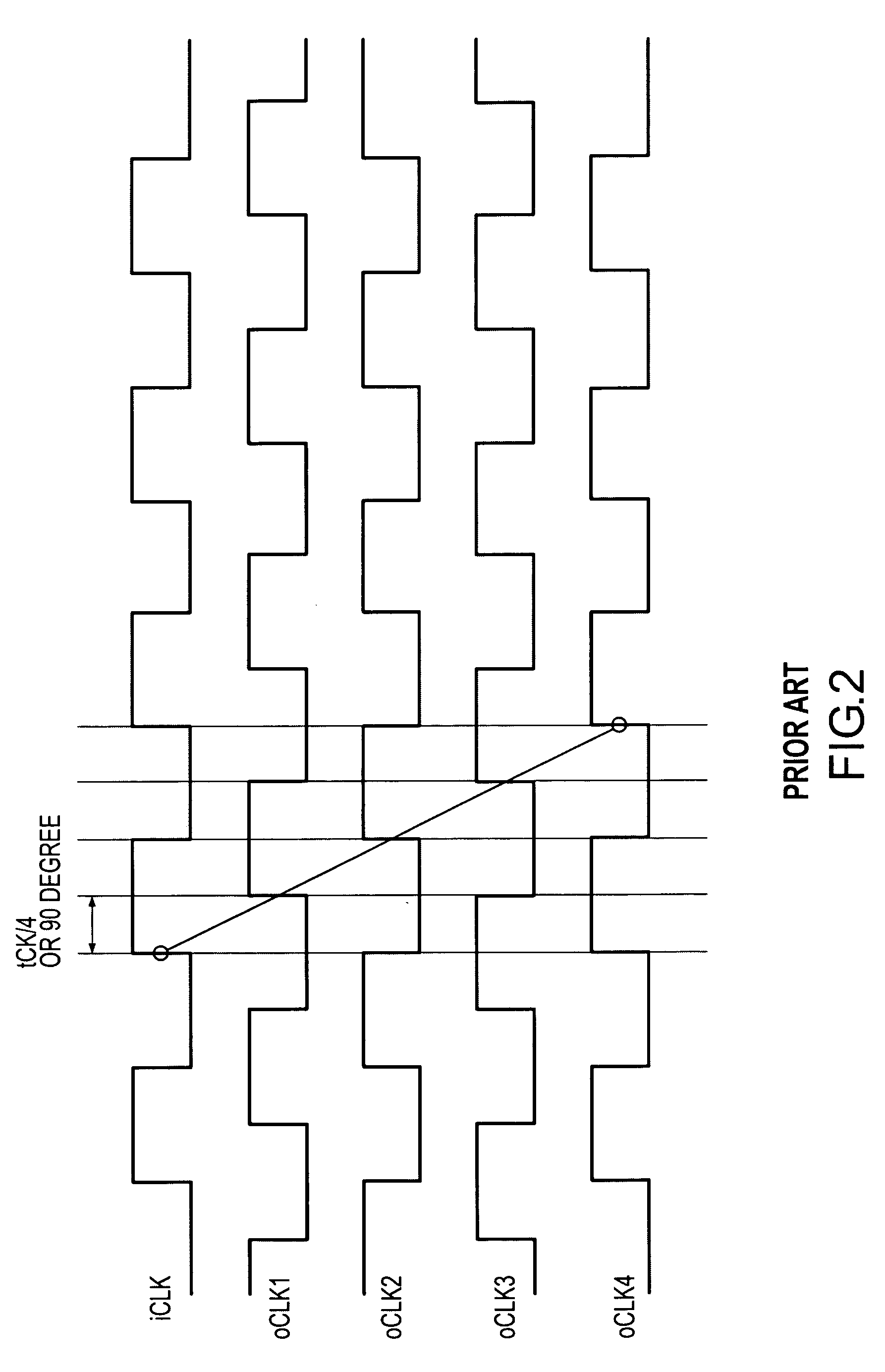Multi-phase clock signal generator and method having inherently unlimited frequency capability
a multi-phase clock signal and generator technology, applied in pulse automatic control, pulse technique, instruments, etc., can solve the problems of severely restricting the frequency range over which delay-lock loops can be used, and it is generally not practical to use a fixed timing circui
- Summary
- Abstract
- Description
- Claims
- Application Information
AI Technical Summary
Benefits of technology
Problems solved by technology
Method used
Image
Examples
Embodiment Construction
[0025]One embodiment of a delay-lock loop 40 for generating multi-phase clock signals is shown in FIG. 4. The delay-lock loop 40 receives the internal clock signal iCLK, and couples it through four paths 42, 44, 46, 48, which generate CLK1, CLK2, CLK3 and CLK4 signals, respectively. The first path 42 includes four series coupled VDUs 50a–d, which have their control input coupled to a voltage to provide a zero voltage-controlled delay DV. The VDUs 50a–d thus each provide a delay of only the intrinsic delay DI, and they are therefore designated by the nomenclature VDUi 50a–d. The final VDUi 50d outputs a CLK0 signal, which is delayed by four times the intrinsic delay of each VDUi 50a–d, i.e., 4DI.
[0026]The output from the next-to-last VDUi 50c is coupled through a VDU 54a, which generates a CLK1 signal. The VDU 54a delays the signal from the output of the VDUi 50c by the sum of the voltage controlled delay DV and the intrinsic delay DI. As a result, the CLK1 signal is delayed form the...
PUM
 Login to View More
Login to View More Abstract
Description
Claims
Application Information
 Login to View More
Login to View More - R&D
- Intellectual Property
- Life Sciences
- Materials
- Tech Scout
- Unparalleled Data Quality
- Higher Quality Content
- 60% Fewer Hallucinations
Browse by: Latest US Patents, China's latest patents, Technical Efficacy Thesaurus, Application Domain, Technology Topic, Popular Technical Reports.
© 2025 PatSnap. All rights reserved.Legal|Privacy policy|Modern Slavery Act Transparency Statement|Sitemap|About US| Contact US: help@patsnap.com



